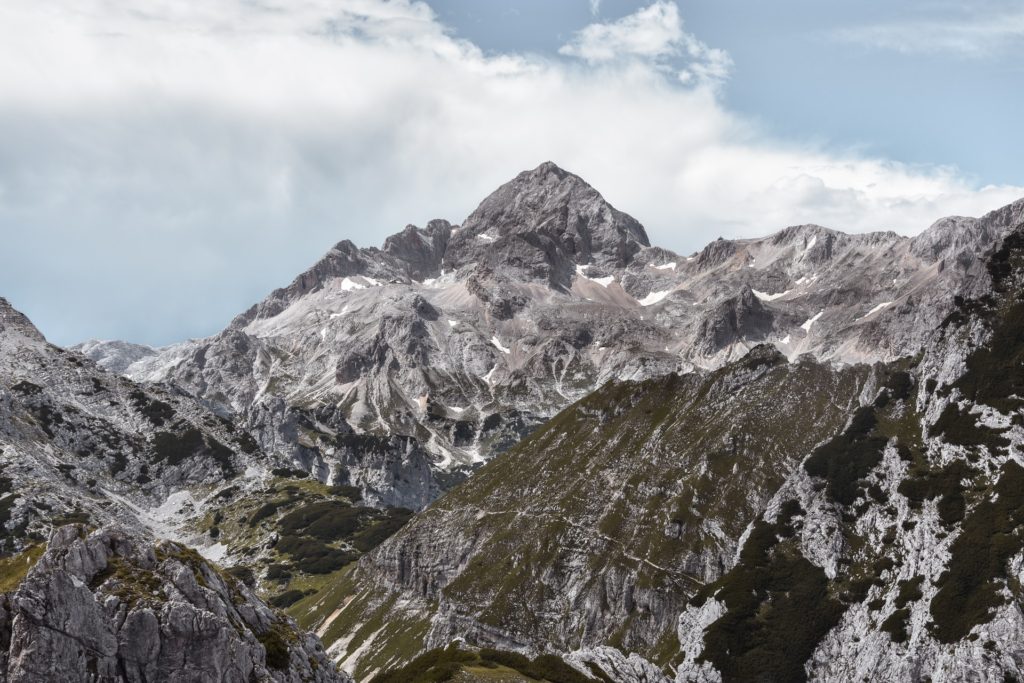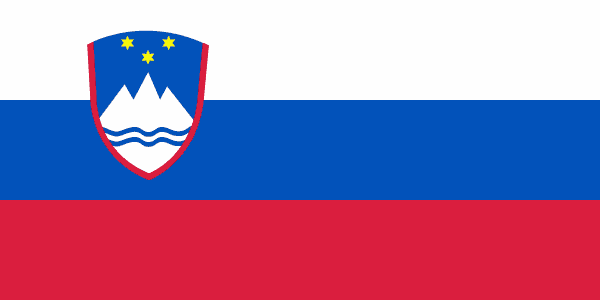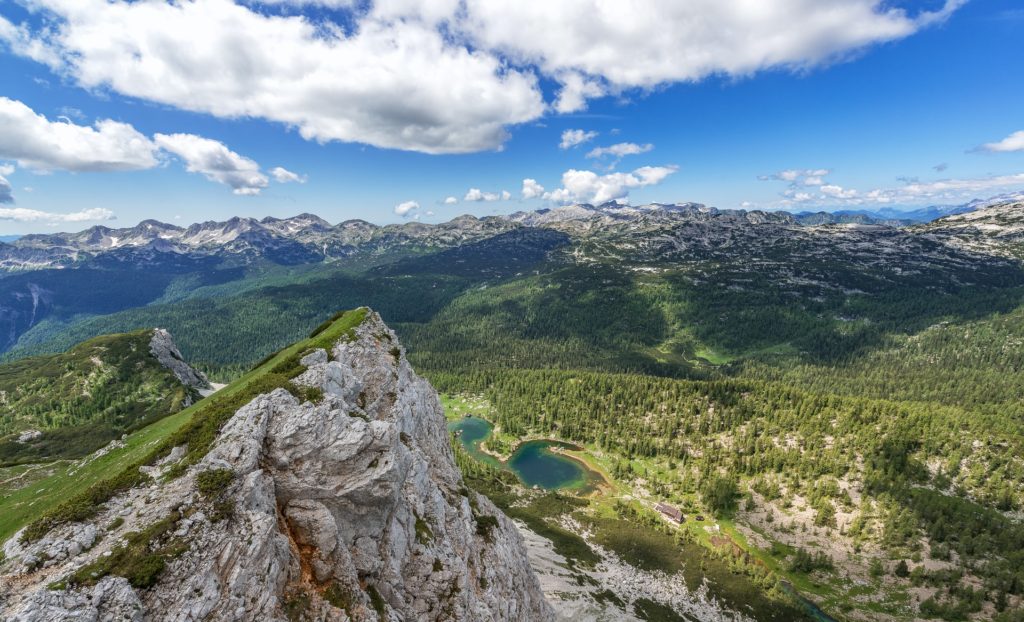Climbing Triglav is something that every Slovene is meant to do at least once in their life. Corner a handful of Slovenes, though, and you will be lucky if half have been to the summit of this 2,864m monster, and this is not just through apathy.
Climbing Triglav is no picnic as it is more than twice the height of Ben Nevis (1,344m), the UK’s highest peak, although none of the ascents starts at sea level. Any fit adult should be able to manage the climb, but before attempting an ascent it is essential to prepare yourself properly and to carry the right gear. A good head for heights is also an advantage, as the sinewy ridges on the approach to the summit are not for the faint-hearted.

Hiring the services of a local guide is a good idea. The reward for careful preparation and physical exertion, though, is the bounty of sweeping views of the Julian Alps and Italy on one side and the Karavanke and Austria on the other, while Slovenia unfurls all around. Slovenia’s highest peak has inspired a sense of awe for centuries, with early Slav settlers believing that the imposing limestone mountain was home to a powerful three-headed deity.
Today the mountain, which has been protected as a national park since 1981, is revered for its beauty (not the supernatural power that inhabits it) and takes pride of place on the Slovenian flag. Most people take two days to tackle the summit – to which there are around two-dozen routes – and stay overnight in one of many mountain huts. Most huts open from June–September and offer basic and hearty Slovenian food, with accommodation costing €10–15 per person.

Dramatic and forbidding, the northern approaches involve an ascent of the mountain’s steep 1,200m north face and are definitely not for beginners. The southern approaches offer somewhat gentler routes, with those tackling Triglav for the first time frequently starting near Bohinj.
The quickest route to the summit is from the Sport Hotel in Rudno Polje (1,345m above sea level), 18km southwest of Lake Bled. Rudno Polje can be reached by car, or by a daily bus that departs Bled in the early morning. From Rudno Polje the summit lies at the very least six hours away, with many climbers opting to stay in the 53-bed Vodnikov Dom na Velem Polju mountain hut (approximately three hours away) or the 62-bed Dom Planika pod Triglavom (around five hours away).
Slovene teenagers like to try to complete the ascent and descent from Rudno Polje to the summit in a single day, but this is a difficult feat for even the fittest person and is definitely not recommended for the inexperienced.

A more popular route takes you from Bohinj to the summit via Slap Savica (Savica Falls), Komarča Crag, Črno Jezero (Black Lake),Veliko Triglavsko Jezero (Great Lake), Zeleno Jezero (Yellow Lake), the Hribarice Plateau (2,358m) and the Dolič Saddle (2,164m).
From Bohinj the summit of Triglav is at least seven hours away, with the last hour or so traversing some fairly challenging terrain including rocks and a cliff face – where steel pegs acting as footholds and fixed cables assist with the final push to the top – and, quite often, snow.
There are three mountain huts on the way – the Dom Planika pod Triglavom, the 104-bed Koča pri Triglavskih Jezerih (four hours from Bohinj) and the 60-bed Tržaška Koča na Doliču (five hours from Bohinj). An alternative and longer route takes hikers from the village of Stara Fužina through the Planica Viševnik meadows to the Koča pri Triglavskih Jezerih hut.
Before any attempt to summit Triglav it is important to get local advice or to seek the services of a guide (highly recommended). The Mountain Club P D Ljubljana–Matica can provide information about guides and mountain huts.